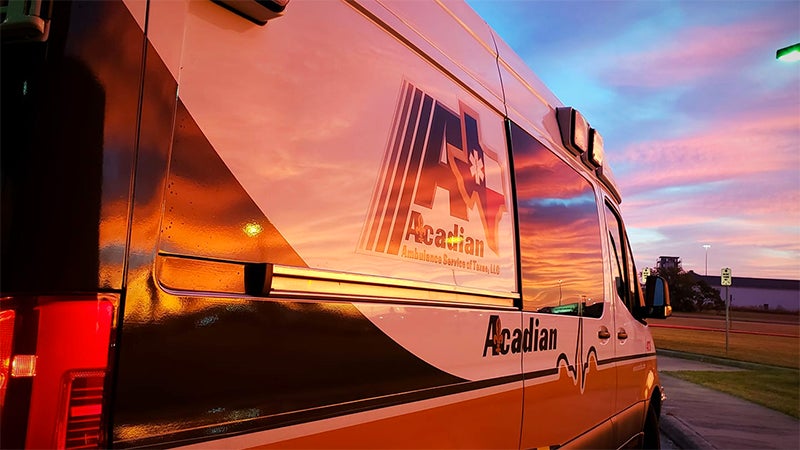Port Arthur hears proposals from ambulance providers; city leaders considering options
Published 12:40 am Thursday, June 22, 2023

- Acadian Ambulance Service (Courtesy photo)
|
Getting your Trinity Audio player ready...
|
The City of Port Arthur will retain the use of Acadian Ambulance Service for an additional 30 days after hearing proposals this week from two medical transport companies.
The city in April opened applications to services seeking a permit to operate within the city limits. On Tuesday, City Council heard presentations from Acadian Ambulance Service as well as City Ambulance Service.
City Ambulance, which has been in operation since 2006, operates in more than 85 percent of the state, according to information from the company.
The corporate headquarters is in Houston. If granted a contract in Port Arthur, the company would create a substation in the city, said Vice President of Operations Andre Ruby.
“Why we are here is because there is an opportunity for Port Arthur, which we see as a very advantageous decision,” Ruby said. “We do believe we supply superior services.”
Ruby said City Ambulance has been operating in Beaumont for two years as one of the two independent ambulance services contracted within the city. Acadian is the second.
Eric Thibodeaux, regional vice president at Acadian Ambulance, said Acadian entered Southeast Texas in 2006 by starting in Port Arthur. In 2010, they became the only permitted provider.
On average, he said, they make 15,500 calls per year. In the last 16 years, they’ve answered 250,000 calls in Port Arthur.
Thibodeaux said they operate 42 ambulances in Southeast Texas.
The company’s dispatch center is in Beaumont and can accommodate city services in the event of a problem with the local 9-1-1 system.
“Two occasions that I needed services…I’m kind of upset about it,” said Councilman Thomas Kinlaw. “The first call, I call…a guy, we had went fishing, and he was having a seizure in my passenger seat. I call and they tell me, ‘we don’t have a bus available.’ I don’t understand why. I’ve never had to call before. I have concerns and to get other calls from the citizens means that it’s a situation that we need to address.”
Andy Hill with Cascades at Port Arthur on 9th Avenue spoke on behalf of the nursing home.
“As a user of ambulance services literally daily at all hours of the day, I feel that adding an additional ambulance service is going to cause confusion for my facility to operate,” he said. “9-1-1 calls out of our facility are to be addressed with the upmost immediacy. So if we have two companies and my nurses are trying to decide which one to call or call and (they) say, ‘we’re not the closest one,’ that’s only going to impede the response time to my facilities. It also impedes response time in the community for our residents.”
Currently the city ordinance does not address the number of ambulances required to be stationed within the city, but does require response times to be within eight minutes or less.
On many occasions, the Port Arthur Fire Department is first on scene to any medical call.
Fire Chief Greg Benson said he did a comparison among 13 cities with the same population according to the most recent numbers provided by the U.S. Census and found Port Arthur has the lowest number of firefighters per square mile — 1.33. The department has 208 firefighters.
In addition, they have the highest percent of EMS calls — 15.2 percent — of those 13 cities.
Within the benchmark areas, nine had EMS services operated through their fire departments and four through the county.
Benson said recently passed House Bill 624, which takes effect Sept. 1, allows fire departments to transport a patient to the hospital under particular criteria.
But when it comes to private services, the fire department has expectations for the provider.
“They have to partner with us and we have to work proactively to make the community safer, but they also have to meet the standards in the ordinance,” he said.
Those include well-trained and qualified staff, the correct equipment and resources, effective communication and coordination, and a good relationship with law enforcement and community stakeholders.


